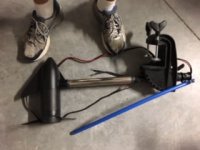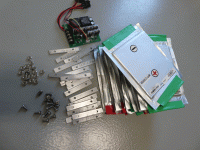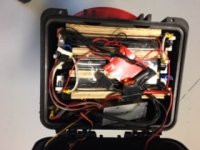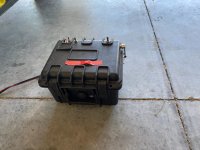I built this boat in 2018.
I never posted a thread on it dedicated to it.
Anyway, here it is!
It has been a very reliable and utilitarian build since I first christened her in 2018 on Rainbow River in Florida.
I chose an inflatable kayak because of inexpensive price and portability.
That said, the electronics components can be applied to any kayak e-project.
Here is the kayak picture I just took (1/15/2022 ) upon my return from a camping trip in Ocala National Park.
I will post build details later.
In a nutshell:
I used stock Intex Explorer K2 Kayak, 2-Person Inflatable Kayak for bones of project.
Motor is a Minn-Kota C2 30lb motor. I cut head and resistor-network switch control unit off motor and tossed it.
For speed control, I retrofitted a 60A PWM (!!!) brushed motor speed control which allows for efficient unlimited speed control in forward and reverse).
Battery pack is a 30AH 3S3P pouch lithium ion pack. I get 3 hours or more of electric-only cruise.
Gun-case box houses pack, controller, electronics.
Building mount for motor was tricky. Results were fantastic though. Very reliable. NEVER ONCE HAD AN ISSUE with completed mount. More details later.
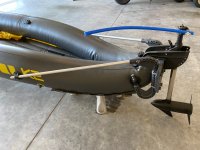
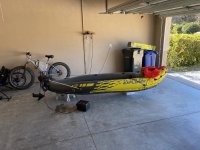
I never posted a thread on it dedicated to it.
Anyway, here it is!
It has been a very reliable and utilitarian build since I first christened her in 2018 on Rainbow River in Florida.
I chose an inflatable kayak because of inexpensive price and portability.
That said, the electronics components can be applied to any kayak e-project.
Here is the kayak picture I just took (1/15/2022 ) upon my return from a camping trip in Ocala National Park.
I will post build details later.
In a nutshell:
I used stock Intex Explorer K2 Kayak, 2-Person Inflatable Kayak for bones of project.
Motor is a Minn-Kota C2 30lb motor. I cut head and resistor-network switch control unit off motor and tossed it.
For speed control, I retrofitted a 60A PWM (!!!) brushed motor speed control which allows for efficient unlimited speed control in forward and reverse).
Battery pack is a 30AH 3S3P pouch lithium ion pack. I get 3 hours or more of electric-only cruise.
Gun-case box houses pack, controller, electronics.
Building mount for motor was tricky. Results were fantastic though. Very reliable. NEVER ONCE HAD AN ISSUE with completed mount. More details later.




